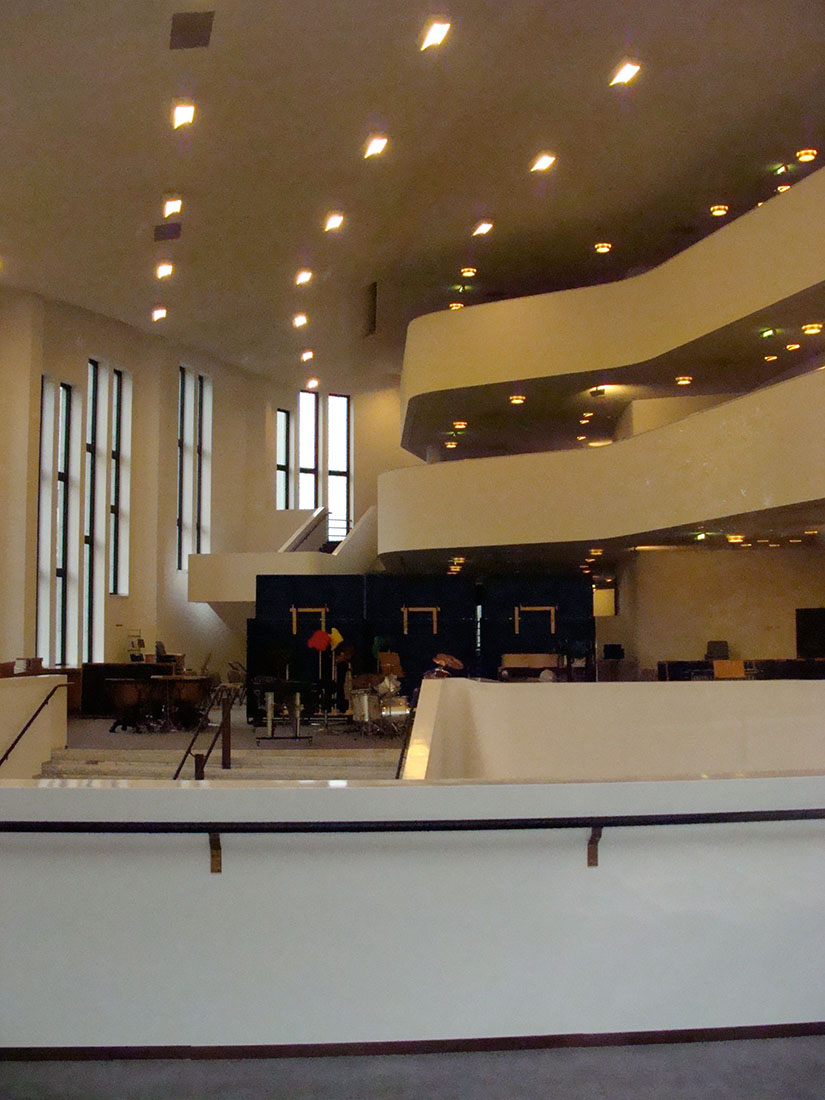 |
 |
 |
 |


Opera and Music Theater Essen
Rolandstrasse / Rellinghauserstrasse
1959 - 1988
The Essen Opera House is the result of an architectural competition of the year 1959. The plans were revised several times, and adapted to changing conditions and requirements.
These adjustments were partialy made in collaboration with the local architect Horst Loy, but the basic idea of the building could always be maintained.
Alvar Aalto, who deceased in 1976, could not experience the completion of the project. The building was constructed only between 1983 and 1988,
under the direction of the German architect Harald Deilmann.
The Opera House is located in the northeastern part of the Essen city park in a city district called Südviertel. The integration within the environment is one of the key design factors.
As a consequence, the car and pedestrian traffic are completely separate. The driveway to the main entrance allows a large number of cars may persist under the canopy
at the same time. The pedestrians reach the entrance access the city garden or from the public transports. At the apex of the site, the persons streams merge.
The organically shaped building is completely covered with natural stone slabs and shows a strong vertical profiling. The volumetry consists of two bodies rising in staged articulation.
The building reaches its maximum height above the stage tower. The large roof is coverd with copper.
The auditorium is an asymmetrical amphitheater with an undulating rear wall, which is occupied by loggia and loggia-like balconies. The asymmetric form results in a hall,
which should not appear blank even with sparse visitors. The auditorium consists of two main elements: a dome-shaped room, which shows a deep blue color (indigo).
The design of the room allows the simple introduction of absorbing or reflecting surfaces. The loggia balustrades are made of white marble, partly solid and partly filigree,
contrasting with the dark background.